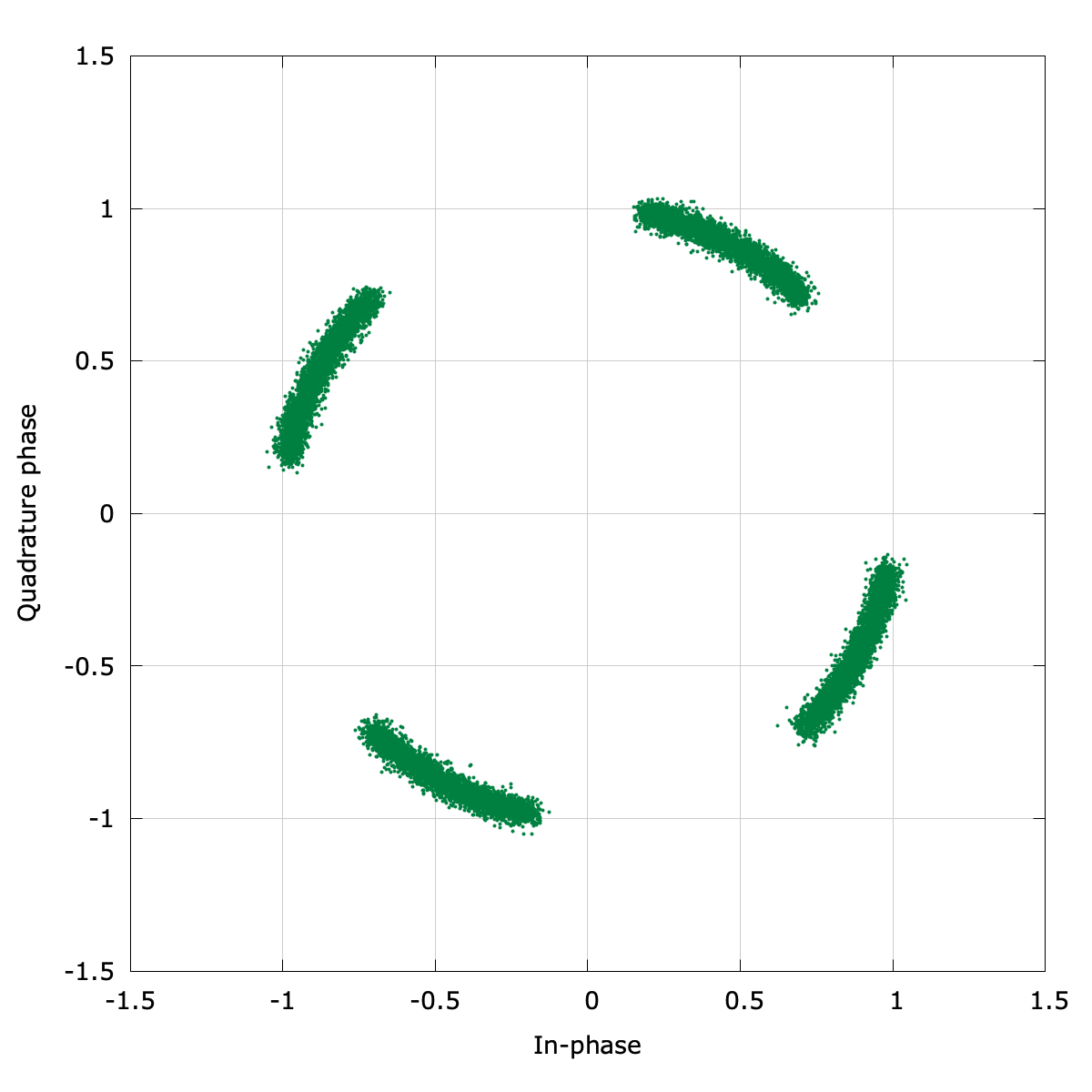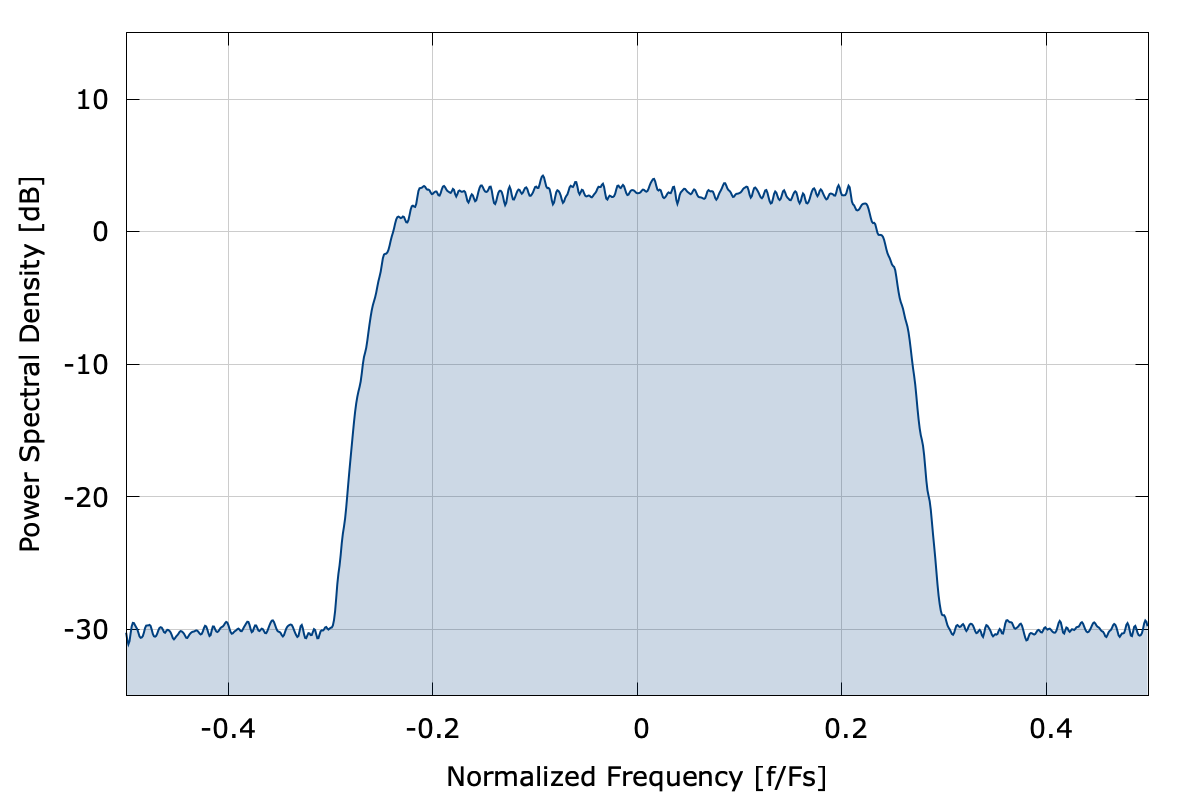channel
API Keywords: channel additive white gauss noise AWGN multipath fading shadowing
The channel family of objects add signal impairments due to various channel conditions commonly found in wireless communications systems, including
- additive white Gauss noise (AWGN)
- channel gain
- carrier phase and frequency offsets
- multi-path fading
- slowly time-varying shadowing
Shown below is an example of the channel object
Figure [fig-channel]. channel example of QPSK
Here is a basic example program demonstrating how to use the object:
#include <liquid/liquid.h>
int main() {
// sample buffer
unsigned int buf_len = 256; // number of input samples
float complex buf_in [buf_len]; // complex input
float complex buf_out[buf_len]; // output buffer
unsigned int num_written; // number of values written to buffer
// create channel object
channel_cccf channel = channel_cccf_create();
// additive white Gauss noise impairment
float noise_floor = -60.0f; // noise floor [dB]
float SNRdB = 30.0f; // signal-to-noise ratio [dB]
channel_cccf_add_awgn(channel, noise_floor, SNRdB);
// carrier offset impairments
float dphi = 0.00f; // carrier freq offset [radians/sample]
float phi = 2.1f; // carrier phase offset [radians]
channel_cccf_add_carrier_offset(channel, dphi, phi);
// multipath channel impairments
float complex* hc = NULL; // defaults to random coefficients
unsigned int hc_len = 4; // number of channel coefficients
channel_cccf_add_multipath(channel, hc, hc_len);
// time-varying shadowing impairments (slow flat fading)
float sigma = 1.0f; // standard deviation for log-normal shadowing
float fd = 0.1f; // relative Doppler frequency
channel_cccf_add_shadowing(channel, sigma, fd);
// print channel internals
channel_cccf_print(channel);
// fill buffer and repeat as necessary
{
// apply channel to input signal
channel_cccf_execute_block(channel, buf_in, buf_len, buf_out);
}
// destroy channel
channel_cccf_destroy(channel);
}
For a more detailed example, refer to examples/channel_cccf_example.c located under the main liquid project source directory.

